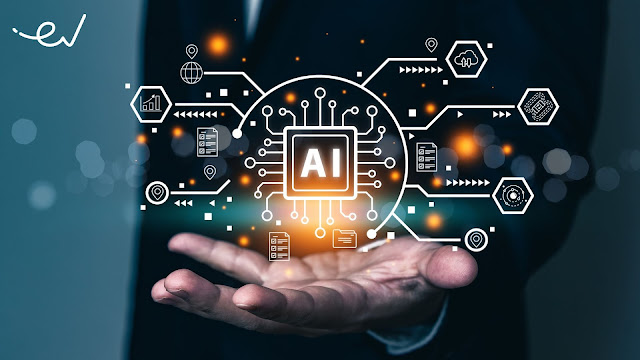Use of Artificial Intelligence in Daily Life
Exploring the Ubiquitous Use of Artificial Intelligence in Daily Life
**Table of Contents**
1. Introduction
- 1.1 Definition of Artificial Intelligence
- 1.2 Evolution of AI in Daily Life
- 1.3 Purpose and Scope of the Article
2. AI in Communication and Entertainment
- 2.1 Virtual Assistants
- 2.2 Social Media Algorithms
- 2.3 Streaming Services and Content Recommendations
- 2.4 Chatbots and Customer Service
- 2.5 Virtual Reality and Augmented Reality
3. AI in Healthcare
- 3.1 Disease Diagnosis and Medical Imaging
- 3.2 Personalized Medicine and Treatment Plans
- 3.3 Drug Discovery and Development
- 3.4 Health Monitoring Devices and Wearables
- 3.5 Mental Health Support and Therapy
4. AI in Transportation and Navigation
- 4.1 Autonomous Vehicles
- 4.2 Traffic Management Systems
- 4.3 Ride-Hailing Services and Route Optimization
- 4.4 Navigation Apps and GPS Technology
5. AI in Education and Learning
- 5.1 Adaptive Learning Platforms
- 5.2 Intelligent Tutoring Systems
- 5.3 Language Learning Apps and Translation Services
- 5.4 Educational Content Creation and Personalization
6. AI in Finance and Banking
- 6.1 Fraud Detection and Prevention
- 6.2 Algorithmic Trading and Investment Analysis
- 6.3 Personal Finance Management and Budgeting Apps
- 6.4 Credit Scoring and Loan Approval
7. AI in Agriculture and Food Industry
- 7.1 Precision Farming and Crop Monitoring
- 7.2 Pest Control and Management
- 7.3 Supply Chain Optimization and Food Safety
- 7.4 Food Quality Inspection and Sorting
8. AI in Retail and E-commerce
- 8.1 Product Recommendations and Personalization
- 8.2 Inventory Management and Demand Forecasting
- 8.3 Customer Service and Chatbots
- 8.4 Visual Search and Augmented Reality Shopping
9. AI in Security and Surveillance
- 9.1 Facial Recognition and Biometric Security Systems
- 9.2 Predictive Policing and Crime Prevention
- 9.3 Cybersecurity and Threat Detection
- 9.4 Border Control and Immigration Management
10. Ethical Considerations and Challenges
- 10.1 Bias and Fairness in AI Algorithms
- 10.2 Privacy Concerns and Data Protection
- 10.3 Job Displacement and Economic Impact
- 10.4 Regulation and Accountability
11. Future Trends and Possibilities
- 11.1 Advancements in AI Technology
- 11.2 Integration of AI with Other Emerging Technologies
- 11.3 Ethical and Responsible AI Development
- 11.4 The Role of AI in Addressing Global Challenges
12. Conclusion: Embracing the Potential of AI in Daily Life
**1. Introduction**
Artificial Intelligence (AI) has become an integral part of our daily lives, revolutionizing the way we communicate, work, learn, and even entertain ourselves. From virtual assistants to personalized recommendations, AI technologies are ubiquitous, shaping our interactions with technology and the world around us. In this article, we will explore the various ways AI is integrated into our daily lives, examining its impact across different sectors and discussing the ethical considerations and future possibilities.
**2. AI in Communication and Entertainment**
AI plays a significant role in enhancing communication and entertainment experiences:
**Virtual Assistants:** Voice-activated virtual assistants like Siri, Alexa, and Google Assistant have become indispensable tools for managing tasks, setting reminders, and accessing information hands-free.
**Social Media Algorithms:** AI algorithms power social media platforms, curating personalized feeds, recommending content, and targeting advertisements based on user preferences and behavior.
**Streaming Services and Content Recommendations:** Platforms like Netflix and Spotify use AI to analyze user preferences and behavior to recommend movies, shows, and music tailored to individual tastes.
**Chatbots and Customer Service:** Many businesses utilize AI-powered chatbots to provide instant customer support, answer queries, and facilitate transactions.
**Virtual Reality and Augmented Reality:** AI enhances immersive experiences in virtual reality (VR) and augmented reality (AR) applications, from gaming and entertainment to training and education.
**3. AI in Healthcare**
AI is transforming healthcare delivery and improving patient outcomes in various ways:
**Disease Diagnosis and Medical Imaging:** AI algorithms analyze medical images like X-rays, MRIs, and CT scans to assist in diagnosing diseases such as cancer, enabling earlier detection and treatment.
**Personalized Medicine and Treatment Plans:** AI helps tailor treatment plans to individual patients based on their genetic makeup, medical history, and lifestyle factors, improving efficacy and reducing side effects.
**Drug Discovery and Development:** AI accelerates the drug discovery process by analyzing vast amounts of data, identifying potential drug candidates, and predicting their efficacy and safety.
**Health Monitoring Devices and Wearables:** Wearable devices equipped with AI algorithms track vital signs, monitor activity levels, and detect abnormalities, empowering individuals to take proactive steps to manage their health.
**Mental Health Support and Therapy:** AI-powered chatbots and therapy apps provide accessible and personalized support for mental health issues, offering resources, coping strategies, and virtual counseling sessions.
**4. AI in Transportation and Navigation**
AI technologies are revolutionizing transportation and navigation systems:
**Autonomous Vehicles:** Self-driving cars and trucks use AI algorithms to perceive their surroundings, navigate routes, and make driving decisions, promising safer and more efficient transportation.
**Traffic Management Systems:** AI optimizes traffic flow, reduces congestion, and improves safety through predictive analytics and real-time monitoring of traffic patterns.
**Ride-Hailing Services and Route Optimization:** Apps like Uber and Lyft use AI algorithms to match passengers with drivers, optimize routes, and estimate arrival times.
**Navigation Apps and GPS Technology:** AI-powered navigation apps like Google Maps and Waze provide real-time traffic updates, alternate routes, and turn-by-turn directions based on current conditions.
**5. AI in Education and Learning**
AI is reshaping the way we learn and acquire knowledge:
**Adaptive Learning Platforms:** AI adapts learning materials and pace to individual students' abilities, preferences, and learning styles, maximizing engagement and retention.
**Intelligent Tutoring Systems:** AI tutors provide personalized instruction, feedback, and support to students, helping them master difficult concepts and improve academic performance.
**Language Learning Apps and Translation Services:** AI-powered apps like Duolingo and Google Translate facilitate language learning and communication across languages, enhancing global connectivity and understanding.
**Educational Content Creation and Personalization:** AI generates educational content, quizzes, and assessments tailored to learners' needs, interests, and proficiency levels, expanding access to quality education worldwide.
**6. AI in Finance and Banking**
AI is driving innovation and efficiency in the finance and banking industry:
**Fraud Detection and Prevention:** AI algorithms analyze transaction data, detect suspicious patterns, and prevent fraudulent activities, protecting customers and financial institutions.
**Algorithmic Trading and Investment Analysis:** AI-powered trading algorithms analyze market trends, identify investment opportunities, and execute trades at lightning speed, optimizing investment strategies and returns.
**Personal Finance Management and Budgeting Apps:** AI-powered apps like Mint and YNAB help users track expenses, set financial goals, and manage budgets, promoting financial literacy and responsibility.
**Credit Scoring and Loan Approval:** AI assesses creditworthiness, analyzes risk factors, and streamlines loan approval processes, expanding access to credit and financial services.
**7. AI in Agriculture and Food Industry**
AI technologies are improving efficiency and sustainability in agriculture and the food industry:
**Precision Farming and Crop Monitoring:** AI analyzes satellite imagery, weather data, and soil conditions to optimize planting, irrigation, and fertilization, maximizing crop yields while minimizing resource use and environmental impact.
**Pest Control and Management:** AI-powered drones and sensors detect pests, diseases, and crop stress early, enabling targeted interventions and reducing reliance on chemical pesticides.
**Supply Chain Optimization and Food Safety:** AI tracks and monitors food supply chains, from farm to table, ensuring freshness, quality, and safety while minimizing waste and spoilage.
**Food Quality Inspection and Sorting:** AI vision systems inspect and sort food products based on quality, size, and ripeness, enhancing efficiency and consistency in food processing and packaging.
**8. AI in Retail and E-commerce**
AI is reshaping the retail and e-commerce landscape, driving personalized shopping experiences and efficiency:
**Product Recommendations and Personalization:** AI analyzes customer data, purchase history, and browsing behavior to recommend products tailored to individual preferences, increasing sales and customer satisfaction.
**Inventory Management and Demand Forecasting:** AI optimizes inventory levels, predicts demand trends, and anticipates stock outs, reducing costs and improving supply chain efficiency.
**Customer Service and Chatbots:** AI-powered chatbots provide instant assistance, answer product questions, and facilitate transactions, enhancing customer support and engagement.
**Visual Search and Augmented Reality Shopping:** AI enables visual search capabilities and AR try-on experiences, allowing customers to find products and visualize them in real-world settings, improving decision-making and reducing returns.
**9. AI in Security and Surveillance**
AI enhances security and surveillance capabilities, safeguarding individuals, properties, and critical infrastructure:
**Facial Recognition and Biometric Security Systems:** AI-powered facial recognition systems authenticate users, control access to secure areas, and identify individuals in real-time, enhancing security and convenience.
**Predictive Policing and Crime Prevention:** AI analyzes crime data, identifies hotspots, and predicts crime patterns to allocate resources effectively and deter criminal activities.
**Cybersecurity and Threat Detection:** AI algorithms detect and mitigate cybersecurity threats, from malware and phishing attacks to data breaches and insider threats, protecting sensitive information and networks.
**Border Control and Immigration Management:** AI-powered systems automate border control processes, verify traveler identities, and screen for security risks, enhancing border security and immigration control.
**10. Ethical Considerations and Challenges**
While AI offers numerous benefits, it also raises ethical considerations and challenges that must be addressed:
**Bias and Fairness in AI Algorithms:** AI algorithms may exhibit biases based on the data they are trained on, leading to unfair outcomes and discrimination against certain groups. Ensuring fairness and inclusivity in AI systems is crucial.
**Privacy Concerns and Data Protection:** AI relies on vast amounts of data, raising privacy concerns about how personal information is collected, stored, and used. Strong data protection measures and transparency are essential to maintain trust and respect user privacy.
**Job Displacement and Economic Impact:** The widespread adoption of AI technologies may lead to job displacement and economic disruption in certain industries. Supporting reskilling and upskilling initiatives and implementing policies to mitigate socioeconomic disparities are necessary.
**Regulation and Accountability:** The rapid advancement of AI requires robust regulatory frameworks to ensure responsible development, deployment, and use of AI technologies. Establishing clear guidelines, standards, and accountability mechanisms is essential to address potential risks and protect societal interests.
**11. Future Trends and Possibilities**
Looking ahead, several trends and possibilities shape the future of AI in daily life:
**Advancements in AI Technology:** Continued advancements in AI technology, including deep learning, reinforcement learning, and natural language processing, will enable more sophisticated and intelligent applications across various domains.
**Integration of AI with Other Emerging Technologies:** AI will be increasingly integrated with other emerging technologies like blockchain, IoT, and 5G, unlocking new possibilities and transforming industries in novel ways.
**Ethical and Responsible AI Development:** There will be growing emphasis on ethical and responsible AI development, with a focus on fairness, transparency, accountability, and societal impact.
**The Role of AI in Addressing Global Challenges:** AI has the potential to address pressing global challenges, from healthcare and climate change to education and poverty alleviation, by providing innovative solutions and insights.
**12. Conclusion: Embracing the Potential of AI in Daily Life**
In conclusion, the use of artificial intelligence in our daily lives is pervasive and transformative, touching virtually every aspect of modern society. From communication and entertainment to healthcare, transportation, education, finance, agriculture, retail, security, and beyond, AI technologies are reshaping how we live, work, and interact with the world around us. Embracing the potential of AI while addressing ethical considerations and challenges is essential to harness its benefits for the betterment of society and ensure a future where AI enhances human well-being and prosperity.













.jpg)

Comments
Post a Comment